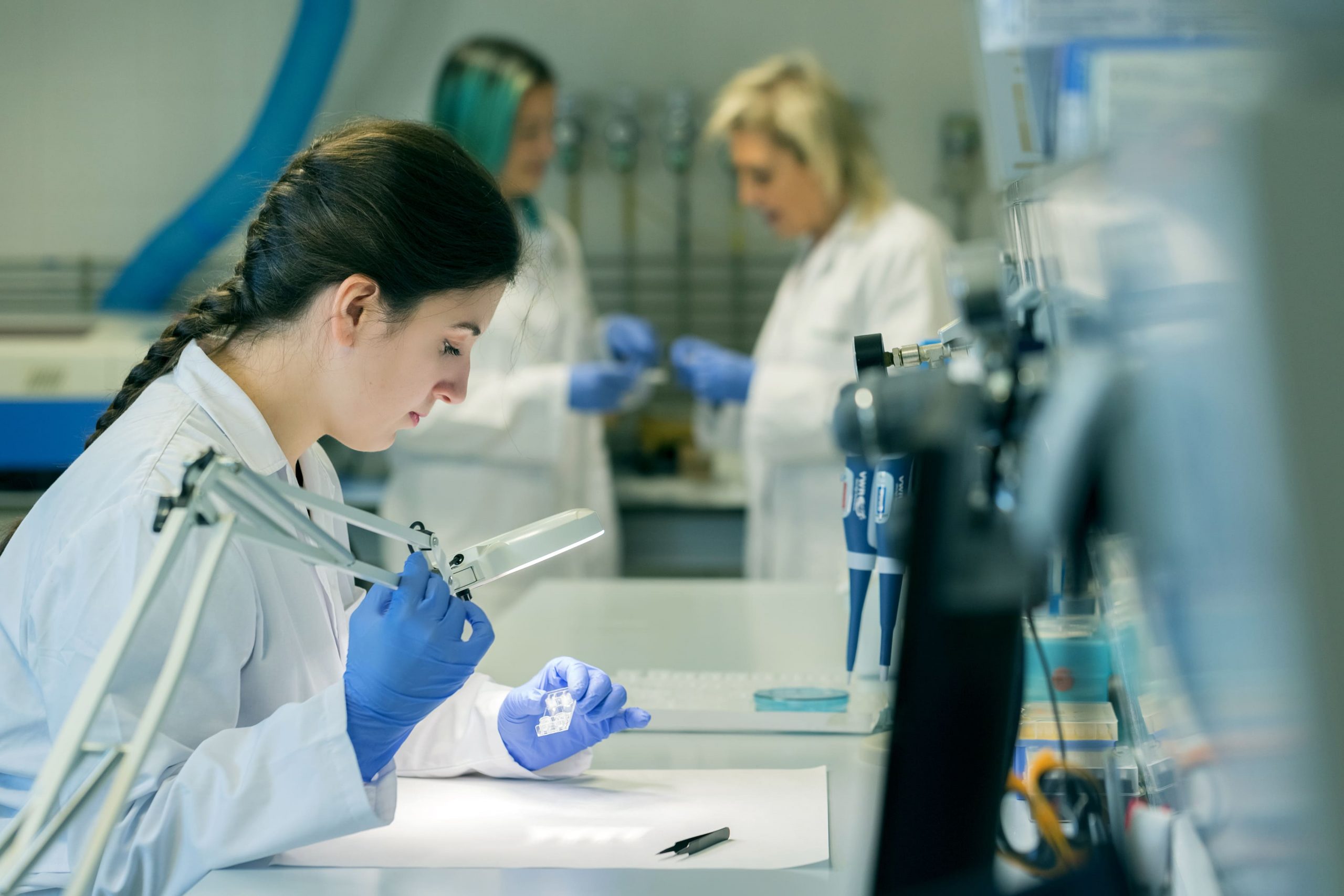FAQ
We solve the most frequent doubts related to our products.
Are the products sterile when the customer receive them?
Yes, all of the chips undergo a sterilization post-treatment and are stored in individual packages. Beonchip guarantees the sterilization and hydrophilicity of the chips up to 6 months after shipment.
Are the chips autofluorescense?
No, our chips are made of COP, a plastic material that doesn´t present autofluorescence. All our products can be used for fluorescence experiments.
What type of connectors are needed in order to use Beonchip's products?
In our shop, we offer four connector kits that are compatible with different types of microfluidic flow control systems. The choice of the connector kit depends on the type of microfluidic flow control at your disposal and the tubing you would like to use:
- Semi-rigid Tubing Kit for Peristaltic Flow
- Semi-rigid Tubing Kit for Syringe Flow
- Flexible Tubing Kit for Peristaltic Flow
- Flexible Tubing Kit for Syringe Flow
If the shear stress is going to be applied using a rocker, there is no need for connectors, but it is necessary to use the chip lids during the experiment to avoid contamination. Working with a rocker is also highly recommended during the first stages of the cell culture before connecting to the final microfluidic control system.
Does COP present non-specific adsorption?
COP is an inert material that is naturally lipophobic and does not suffer from non-specific adsorption as other silicone materials like PDMS. Therefore, its an ideal candidate for drug efficacy or toxicity platforms and does not interact with the culture medium.
Can isopropanol or acetone be used on Beonchip's products?
Yes, COP is highly resistant to chemicals such as alcohols, acids or aliphatic compounds.
How does the oxygen reach the cells if COP is impermeable?
Oxygen can be supplied to the cells via the culture medium. In fact, impermeability is one of the greatest advantages of our products for Organ-on-Chip applications since it allows the precise control of the oxygen levels in the cell culture and even reproduces the hypoxia conditions that must tissues undergo in the human body.
Is it possible to recover the cells after using a chip?
Cell recovery from the devices for downstream applications is possible. After removing medium and washing with PBS, perfuse your choice cell detachment solution and incubate the time needed. Neutralize your solution by adding an inactivator to the reservoirs. You may tilt the device manually so that it is well-mixed. Also, you may resuspend actively the liquid with the tip in the inlet/outlet well hole to help cell detachment. Check under the microscope. Finally, collect your cells aspirating all the liquid inside the device. We also illustrate the process of extracting the cells step by step in the section technology.
You can explore this process step by step in our technical note on the cell extraction.
Is it possible to modify some of the characteristics of Beonchip´s standard products?
We offer the possibility of customizing our products. Features such as the pore size of the membrane in the Be-Transflow of Be-Doubleflow, or the channel size and shape can be modified. Check the complete list of customizable features in the secton custom chips for further information. In addition, Beonchip also manufactures completely new products for customers. If you have an idea for a microfluidic device or labfare for biomedical or pharmaceutical applications, contact us to get a quotation for the prototype and production of your design. We can assist you in walking the path from an idea to mass production. Contact our service team for more precisse advice or request a meeting with our team.
Can we use our own membranes on Beonchip's products?
Yes. It is a common service that we do to use customer membranes inside our chips. Depending on the ease of use of the membranes and how long it takes to integrate it in our fabrication process the price of the first batch will vary. Afterwards, it is priced as a custom product.
Is it possible to connect several chips in series?
Yes, using our connectors it is possible to connect several chips in series. This is often done to study the crosstalk between different tissues.
Is it necessary to use HEPES-buffered media in the devices?
It is not necessary if you are storing the chips in the incubator without perfusion but highly recommended for experiments in which the cells undergo continuous perfusion.
Are the devices reusable?
No, all cell culture platforms are single-use devices.
Ask for info
If you want to know more about our products, contact us or request a meeting with our team here.
Contact ›


